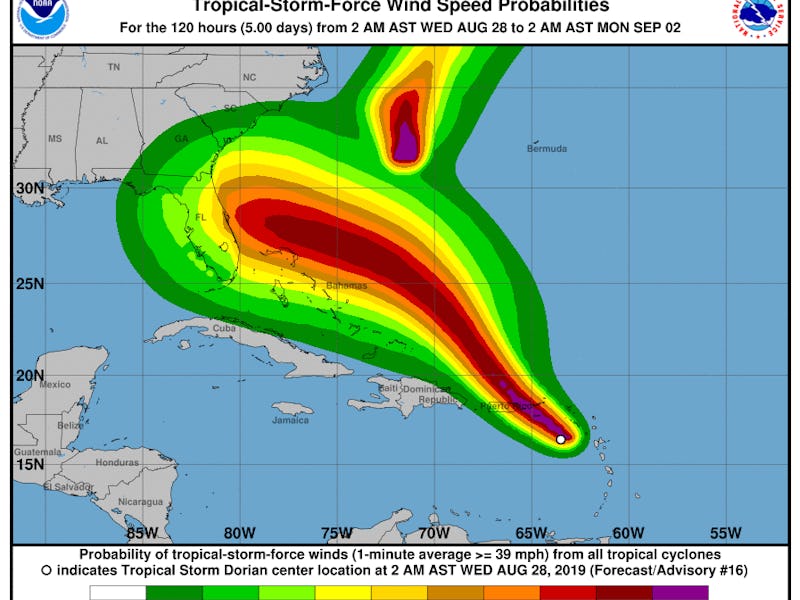Tropical Storm Dorian: What's Its Path, and Who Will Be Affected?
Dorian will face a confusing combination of weather factors as it moves.

On Tuesday, the National Hurricane Center issued a tropical storm warning for Puerto Rico and part of the Dominican Republic as Tropical Storm Dorian approaches. Some specific weather conditions are making this storm especially hard to predict, but experts at the NHC have a pretty good sense of where it’s headed: It is expected to reach the Puerto Rico and possibly the Dominican Republic on Wednesday before moving toward Florida, where it will likely make landfall over the weekend.
Puerto Rico and the eastern end of the Dominican Republic are not only under a tropical storm warning but also a hurricane watch, since officials aren’t sure whether Dorian will be a hurricane or tropical storm when it gets there. Either way, the designation indicates that residents could encounter winds blowing 74 miles per hour or more in the next 48 hours.
Forecasters have predicted that Wednesday will be the single wettest day for San Juan, Puerto Rico, since Hurricane Maria made landfall in 2017, with about 4 to 6 inches of rain falling on the island and some areas receiving up to 10 inches. Maria was a Category 5 hurricane, though, whereas Dorian is currently straddling the line between tropical storm and hurricane, so officials don’t expect Dorian to cause nearly as much damage as Maria did.
Tropical Storm Dorian is expected to reach Florida over the weekend as a hurricane.
It’s not yet clear whether the storm will turn into a hurricane or where it will go after passing Puerto Rico, but experts are predicting that it will make landfall in Florida over the weekend as a Category 1 hurricane.
This prediction is made more complicated by a combination of weather factors, though.
On the one hand, sea surface temperatures are warm, which typically encourages intensification of storms. But on the other hand, dry air in the Caribbean and shearing winds on the surface of the water are both factors in play that can contribute to weakening storms.
For now, the only thing that seems certain is that Puerto Rico will face sustained tropical storm force winds on Wednesday, so residents are encouraged to seek shelter. The next few days will show what lies in store for Florida and the rest of the southeastern United States.